YESTERDAY
I DECIDED to break the concrete under extreme heat caused by those
particles of dust from the Sahara, that is making our life miserable in this continent.
One can not see the clouds, the visibility is pretty much like London fog. Perhaps, if they make possible that dream of taxing countries for gas emissions... We could
do the same, tracing the origins of the dust making life more miserable than just
from the concrete/asphalt heat that gets worse day by day.
At any rate. With sledge hammer and chisel I started to make the hole. It was not
difficult since it is the third made on this side of the house. Approximately an hour
later, the mission was finished. Got rid of the debris, took out the soil about two feet deep, one in diameter from it and replacing it with my home made compost of soil,
dry leaves, earth worms and such. Pour out some water and that was that.
particles of dust from the Sahara, that is making our life miserable in this continent.
One can not see the clouds, the visibility is pretty much like London fog. Perhaps, if they make possible that dream of taxing countries for gas emissions... We could
do the same, tracing the origins of the dust making life more miserable than just
from the concrete/asphalt heat that gets worse day by day.
At any rate. With sledge hammer and chisel I started to make the hole. It was not
difficult since it is the third made on this side of the house. Approximately an hour
later, the mission was finished. Got rid of the debris, took out the soil about two feet deep, one in diameter from it and replacing it with my home made compost of soil,
dry leaves, earth worms and such. Pour out some water and that was that.
TODAY
OPENED my eyes at twelve am. Woke up to the rattle of Snow White, and two females, plus two
of her mentally challenged fairies. One house down, the children hollering as loud as possible at
that quiet time of the night. Fortunately this idiot is moving away. Blessed...
Later watched some tv. Nothing worthy of mentioning. Took a couple of Melatonin pills, falling
asleep.
Woke up before six, as usual. Took the DIVA to the water closet, feed her and changed the water.
Some time later, forgive the inexact times... Pulled out from the west garden facing the street,
a couple of Crotons that is all left from the original owners and Hibiscus that I had
propagated from my strolls in Santurce. The reason? I decided to keep just trees/bushes with
small leaves such as, Murraya paniculata and Calliandra haemathocephala for harmony.
Around 8:00, pulled out from their pots all the vines. No need to enumerate. Clitoria ternatea survived the vegetative cleansing, along with Oxalis, planted in the corner of the wall. A spiral wire for this vine was placed, to keep it happy.
The Bouganvillea, came later with some soil mix, similar to the one mentioned before. Water and soluble fertilizer and that was that.
The last chore was to make another spiral for the Bouganvillea, dark pink, in the left corner,
west garden to keep this long branch straight or less crooked, if you may. Swept all the pertinent
areas. And here I am..
of her mentally challenged fairies. One house down, the children hollering as loud as possible at
that quiet time of the night. Fortunately this idiot is moving away. Blessed...
Later watched some tv. Nothing worthy of mentioning. Took a couple of Melatonin pills, falling
asleep.
Woke up before six, as usual. Took the DIVA to the water closet, feed her and changed the water.
Some time later, forgive the inexact times... Pulled out from the west garden facing the street,
a couple of Crotons that is all left from the original owners and Hibiscus that I had
propagated from my strolls in Santurce. The reason? I decided to keep just trees/bushes with
small leaves such as, Murraya paniculata and Calliandra haemathocephala for harmony.
Around 8:00, pulled out from their pots all the vines. No need to enumerate. Clitoria ternatea survived the vegetative cleansing, along with Oxalis, planted in the corner of the wall. A spiral wire for this vine was placed, to keep it happy.
The Bouganvillea, came later with some soil mix, similar to the one mentioned before. Water and soluble fertilizer and that was that.
The last chore was to make another spiral for the Bouganvillea, dark pink, in the left corner,
west garden to keep this long branch straight or less crooked, if you may. Swept all the pertinent
areas. And here I am..
Words of Wisdom
Is there anything sillier than TWITTER? Some folks invited me to follow them and they
promised to follow me. What for? None of these fools, men/women practice horticulture. Their posts seem just thoughts expressed aloud without purpose, just listening to themselves hoping that some other fool may be in the same mental wave trance. Farewell, until then...
Is there anything sillier than TWITTER? Some folks invited me to follow them and they
promised to follow me. What for? None of these fools, men/women practice horticulture. Their posts seem just thoughts expressed aloud without purpose, just listening to themselves hoping that some other fool may be in the same mental wave trance. Farewell, until then...


















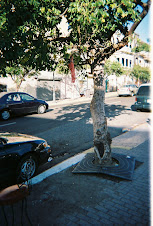-25.jpg)
-24.jpg)
























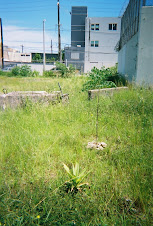




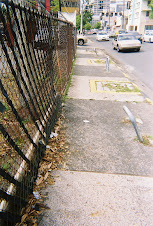
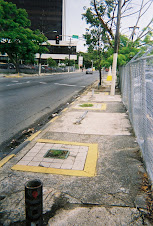
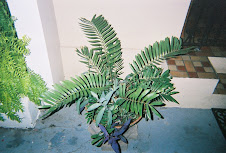




-22.jpg)
-25.jpg)
-24.jpg)






-16.jpg)
-13.jpg)
-08.jpg)
















































